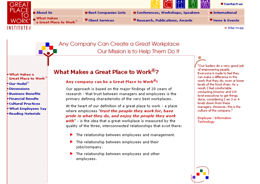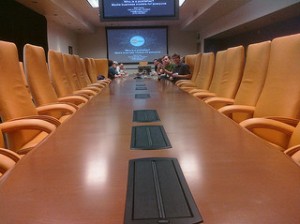The concept of branding for products and services is well known. Employer branding may be the least known type of branding yet is becoming more important to organizations. The reason is changes in workforce demographics. The baby-boomers are retiring and the pool of new recruits is not sufficient to fill the gap. According to an Accenture survey, 60% of CEOs are very concerned about attracting and retaining people. Enter the concept of Employer Branding.
Brett Minchington (The Employer Brand Institute), defines employer branding as “the image of the organization as a ‘great place to work’ in the minds of current employees and key stakeholders in the external market (active and passive candidates, clients, customers and other key stakeholders).”
UK based Business Development Practice Ltd. indicates that ideally, the central idea behind the employer and client brands should be the same. At the very least they need to be consistent (see above graphic). But unlike product or corporate brands, an employer brand is not as visible to its target audience.
This looks like this subject is starting to get complex and involved. It could, and companies could wind up spending lots of money and time to develop their Employer brand. I have a suggestion: you may have seen Fortune magazine’s annual “Best Companies To Work For”. The organization that does the analysis behind the selection process is The Great Place To Work Institute. If you make it to this list you have an effective Employer Brand.
The companies on this list realize that it is the intellectual capital, what is in the minds and hearts of people – rather than the buildings, the tools, the financial capital – that has the power to truly differentiate and grow a business – and beat the competition. Therefore, they do what is needed to attract, grow and keep their people. Benchmarking how these got to the list makes sense.
Some suggestions: first look at “Our Model” section. This shows the major dimensions that need to be addressed:
“Trust is the essential ingredient for the primary workplace relationship between the employee and the employer. According to our model, trust is composed of three dimensions: Credibility, Respect, and Fairness. The final two dimensions of the Institute’s model relate to workplace relationships between employees and their jobs/company (Pride), and between the employee and other employees (Camaraderie)”.
This is not quantum physics. It is very straight-forward and not difficult to grasp. Yet too many companies waste money looking for something more esoteric. I particularly like that the Institute says as companies become effective in applying these dimensions the distinction between labour and management fades.
There is more. By treating people well, the companies on the list reap business and financial benefits superior to their peers.
Want to develop an effective Employer Brand? Your first step must be a visit to the The Great Place To Work Institute website.
Ed Konczal has an MBA from New York University's Stern School of Business (with distinction). He has spent the last 10 years as an executive consultant focusing on human resources, leadership, market research, and business planning. Ed has over 10 years of top-level experience from AT&T in the areas of new ventures and business planning. He is co-author of the book "Simple Stories for Leadership Insight," published by University Press of America.




the article is really good.please send me some information regarding how an organization suffers if it does not has employer branding.
hope to receive the answer
Thanks for your kind comments.
You might visit http://www.greatplacetowork.com/great/graphs.php
This non-profit ranks the best companies to work for and this is a proxy for employer branding. They show the financial performance of these companies vs. stock market performance. So if don’t have an effective employer brand you may suffer financially.
Hope this helps.
Best wishes,
Ed
This was a useful document, thank you. Who produced the diagram “Employer brand – Key Components” ? It would be very useful to me for a project I am doing. Thanks
Hi Charlotte
The Employer Brand Key Components chart is from the Business Development Practice, and is in the PDF linked to in Ed’s post above.
I’m glad you found his post useful.
what is the source of the model of the employer brand key components?
Hi Paria
The Employer Brand Key Components chart is from Business Development Practice, and is in the PDF linked to in Ed’s post above.
This article is useful to know about employer branding. As a research scholar, i want to know further more detail @ employer brand and leadership competency of an organization and how to maintain by the employer.